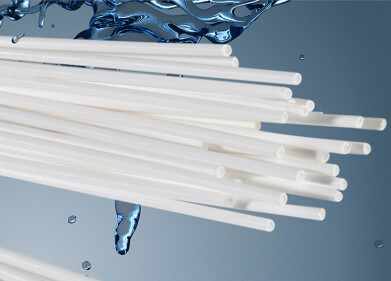Waste management
Who Do Companies Use Microplastics?
Jan 21 2022
For decades, we’ve known about the potential problems posed by microplastics. Capable of enduring in our environment for a very long time, they’ve infiltrated almost every part of planet Earth. This ubiquity has had a terrible effect on nature, with animals (particularly those living in sea) prone to ingesting the tiny particles and suffering as a result. Thanks to the results of one recent study, we now have concrete evidence that human cells are also susceptible to damage and even death from microplastic exposure.
So why, then, are they still so prevalent in today’s society? It’s estimated that up to 12 million tonnes of plastic are deposited in our seas and oceans each year, with much of that waste breaking down into smaller microplastics over time. Even more concerningly, certain industries deliberately include microplastic elements in their products. Why? Here’s a quick rundown of the major offenders – and why they continue to pollute the planet in this way.
Textiles
Clothing and fabrics made from synthetic materials like polyester, nylon and spandex are widespread in today’s world. That’s because these substances are far cheaper to manufacture on a mass scale than natural alternatives like cotton, silk, wool and hemp. What’s more, they have the additional advantages of being flexible, versatile and fairly long-lasting, which is why manufacturers continue to use them – and why consumers continue to buy them.
Cosmetics
Tiny balls known as microbeads are included in many cosmetic products such as face scrubs, body washes, shampoos and toothpastes. Manufacturers use them to provide an abrasive surface which can rub against the skin, thus removing dirt, sweat and other impurities more effectively. However, microbeads have been banned in both the UK and the USA for several years now, though they are still popular in other parts of the world.
Pharmaceuticals
Some treatments contain tiny microplastic elements which can aid in the delivery of the drug to the relevant site in the body. Given that this has a proven beneficial effect that extends beyond mere convenience and economy, the use of microplastics in pharmaceuticals is often regarded as one of the most legitimate applications in practice. This also complicates the legislation behind blanket bans on microplastics, which are discussed further in the next section.
Future legislation
Since 2017, the EU has been considering introducing this exact kind of ban to reduce the consumption of microplastics and, hopefully, limit the exposure of its citizens to them. However, Brussels has repeatedly delayed the decision and although it is expected to be introduced this year, there’s no guarantee that it won’t be postponed once more. Meanwhile, some 42,000 tonnes of microplastics – the equivalent of 1.6 billion plastic bottles – can find their way into the environment each year that a ban is not forthcoming.
Events
May 11 2025 Vienna, Austria
May 18 2025 Algiers, Algeria
23rd International Water Management Exhibition
May 20 2025 Prague, Czech Republic
Singapore International Water Week Spotlight 2025
Jun 23 2025 Singapore
Jun 25 2025 Sao Paulo, Brasil














